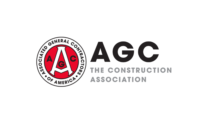Better Coordination on Construction Projects Can Improve a Contractor’s Profitability
New data reveals that improving how companies work together on-site can increase schedule and budget reliability and reduce stress for workers

Nearly all contractors in the U.S. and Canada (98 percent) have had projects with serious quality issues in the last three years, such as errors, omissions and rework, according to the latest study released by Dodge Construction Network. Not by Design: The True Cost of Poor Collaboration in Construction SmartMarket Brief, published in partnership with Dusty Robotics, examines the causes of these challenges and provides actionable, tactical strategies for improving future project outcomes.
Conflict Resolution is a Critical Skill
The findings show that contractors constantly interact with other companies on their projects, with 17 daily interactions on average, and nearly half of those interactions (eight, on average) involve conflicts. Good conflict resolution is as critical a skill for a construction worker on-site as their technical skills in their trade, but the study suggests that specialty trade contractors, in particular, rarely experience good resolution from these conflicts. Only 38 percent believe that everyone involved understands what is being communicated, and 48 percent find that everyone agrees on the next steps and future actions in most of their conflicts with other companies, a sharp contrast to the general contractors (50 percent and 69 percent, respectively).
Improving Multi-Trade Coordination Can Improve Project Performance
Effective coordination among the multiple trade contractors on-site is essential to conflict reduction, and there is still significant room for improvement. In fact, 33 percent of contractors find that coordination issues on-site are the root cause of the construction quality challenges they experience. Coordination issues have a major impact on projects, including challenges with cost performance, labor resource management, schedule compliance and company profit margin erosion. Such coordination issues lead to a 9 percent average budget increase and an average of 10 percent erosion in annual company profit margin.
Good Collaboration is at the Heart of a Successful Project
Contractors understand that collaboration is critical to addressing the challenges experienced on construction sites, with 96 percent agreeing that active collaboration improves projects. However, when six specific approaches to actively fostering collaborative behaviors were tested in the survey, only 18 percent reported using more than three of those measures. Even the two most-effective approaches — implementing policies and procedures that promote collaboration and investing in technology that supports collaboration — were only used by 43 percent and 50 percent, respectively. This suggests a major opportunity for contractors to actively invest in improving collaboration, especially since those who have already made those investments experience fewer construction quality issues and better conflict resolution, and over 90 percent of the contractors surveyed want to work with companies they know have made these investments.
Field Professionals Need Better Tools to Drive Coordination
The findings show that only 11 percent of field personnel report always having access to the information they need about what and where to build on projects. Fewer than one-third of field personnel use BIM for coordination, conveying design intent or clarification during job site project team meetings. And currently, 90 percent of contractors utilize manual means, like chalk lines for layout, but strikingly, many are open to a better solution. While automated layout is still an emerging technology, used by only 4 percent currently, nearly six times as many (34 percent) would consider using this technology in the future.
Download Not by Design: The True Cost of Poor Collaboration SmartMarket Brief to get more detailed information on the challenges that contractors experience on-site and the potential solutions they can utilize to address them.
Looking for a reprint of this article?
From high-res PDFs to custom plaques, order your copy today!






